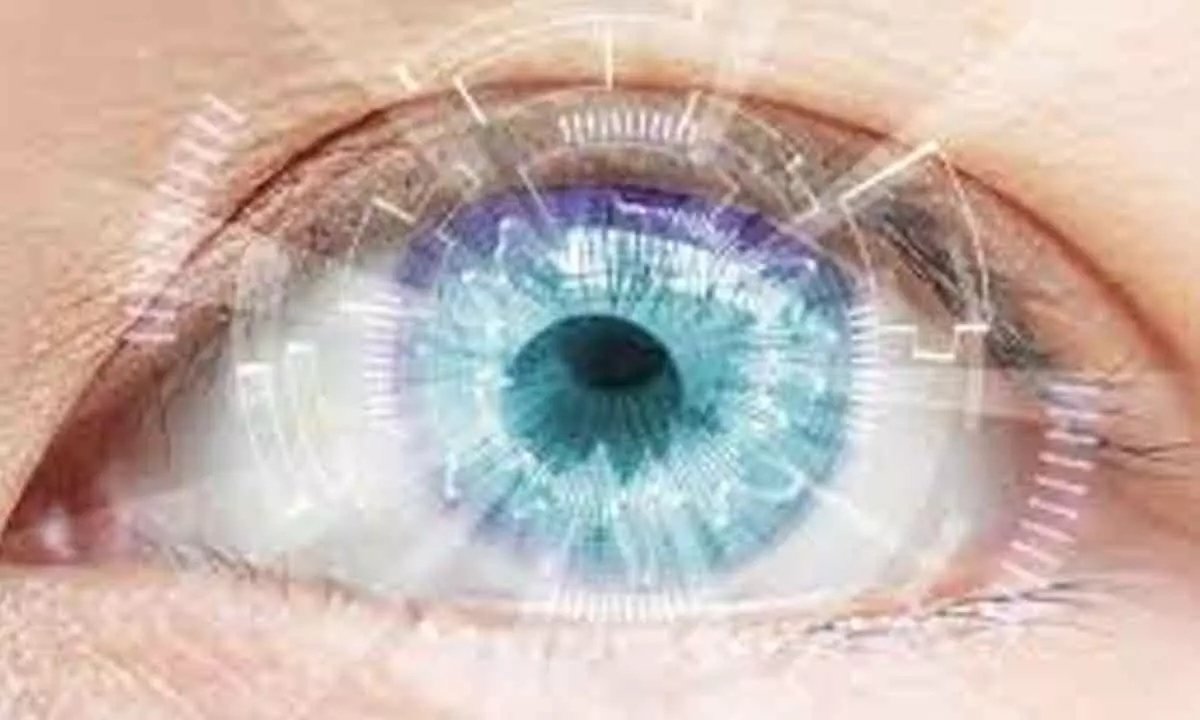Live
- Outrage as stray dogs poisoned in Sullurpeta
- Hyderabad soaks in vibrant Yuletide spirit
- Heavy rains forecast at isolated places in AP
- Paediatricians raise alarm over spread of HFMD in Prakasam
- Cong demands Shah’s expulsion
- One-man panel to visit three districts from Dec 27
- Monitor investments, creation of jobs: CS
- Hyderabad: City-based Karaoke group feted by Rafi family
- Rachakonda sees uptick in murders, kidnappings; overall crime rate rises
- Hyderabad: Police bust drug racket, three land behind bars
Just In
Eyestem files for approval for its product to treat geographic atrophy


170 million people suffer from this disease around the world, 25 million of which are in India
Bengaluru: Dry age-related macular degeneration (dry AMD) is the largest cause of incurable blindness in the world for patients over 50 years. 170 million people suffer from this disease around the world, 25 million of which are in India. These numbers will unfortunately increase in the coming decades as our population ages. The more severe version of dry AMD is geographic atrophy and no therapy is available to arrest or reverse this loss of vision.
Eyestem Research on Monday announced the submission of an Investigational New Drug (IND) application to the Central Drugs Standards Control Organization, India (CDSCO) to begin first in-human trials of Eyecyte-RPE™for subjects with medium- and late-stage geographic atrophy, secondary to dry AMD.
Chief Medical Officer, Eyestem Research, Dr. Rajani Battu said, “We are excited to start human trials for Eyecyte-RPE™. Dry AMD is a huge disease burden, and this therapy has the potential to make a meaningful difference in our patients’ lives.”
The Chief Executive Officer, Eyestem Research, Dr. Jogin Desai said, “Most cell and gene therapy products under development in the West are estimated to cost over US$ 200,000. Our vision is to democratize access to such treatments at a fraction of these costs and begin disruption of the current status quo with our Eyecyte-RPE™ product.”
Eyestem Research is a deep science company incubated at the Centre for Cellular and Molecular Platforms, Bengaluru, and supported by DBT-BIRAC as well as prestigious Indian and global healthcare investors. The IND submission for Eyecyte-RPE is supported by robust GLP toxicology data from Dabur Research Foundation in India and excellent efficacy/safety data in animal models at Oregon Health and Science University. Validation of the injection technique and dose-finding studies were done in advanced animal models at the Singapore Eye Research Institute.

© 2024 Hyderabad Media House Limited/The Hans India. All rights reserved. Powered by hocalwire.com






